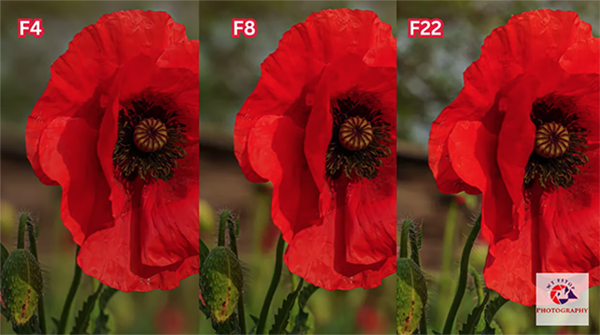Stacey Solomon trades in her all-white kitchen for this daring, on-trend colour scheme
It pleasantly surprised fans
Landscape photography and telephotos lenses aren’t two concepts that typically go together, because most photographer reach for wider focal lengths. But if you’re familiar with the tutorials we feature from Utah-based pro Austin James Jackson, you know how much he loves shooting the great outdoors with telephoto glass.
As Jackson says, “I continue to fill my portfolio far quicker with telephoto landscapes than I do with wide-angle scenes.” In this informative 10-minute episode he provides 7 helpful tips for doing the same. He discusses a wide range of topics, from composition, using negative space and leading lines, to adding depth, understanding compression and much more.
One reason for using a long lens to capture images of the great outdoors is that it enables you to reduce clutter, create a more intimate look, and bring attention to “something that’s out of the ordinary.” One example is photographing forest scenes, and Jackson says this can be “excruciatingly difficult under most lighting conditions” when shooting with a wide-angle lens.

But watch what happens when Jackson pulls out a telephoto lens and uses it to advantage in California’s coastal redwoods where the forests are really busy with tightly-packed tree and clusters of other types of foliage with different colors and tones. As you’ll see, a telephoto zoom enables you to make sense out of all the chaos.
When taking this approach Jackson typically keeps the sky out of his composition to further simplify the images. He also explains why it’s very important to keep a close eye on the edges of the frame to make sure that no distracting elements intrude into the shot, and thereby draw attention away from the essence of the photo. As you’ll see, it’s easy to avoid that problem by zooming in as tight as necessary.
Jackson also provides sound advice for “following the light” in a way that is significantly different than what you’d might do when shooting wide-angle landscapes. He also explains the concept of “telephoto compression,” and how to leverage this optical effect for creating images with maximum impact.

Other important topics include the power of negative space, simple methods for adding depth to telephoto landscapes, and the manner in which Jackson employs leading lines to tell a story and draw the viewer into the scene.
If landscape photography is your thing, you’ll definitely want to pay a visit to Jackson’s popular YouTube channel where there are many more powerful techniques to learn. So set aside some time to explore everything that’s available.
And if you prefer to stick with the standard approach, be sure to watch the tutorial we posted from another accomplished outdoor photographer who demonstrates several pro tips for shooting expansive landscape photographs with a wide-angle lens.
Very few photographers prefer sitting behind the computer processing photos than being out in the field shooting with their camera. If this sounds familiar, and you use Lightroom to edit your images, the quick tutorial below is definitely worth a look.
That’s because you’ll learn five timesaving keyboard shortcuts in barely seven minutes for streamlining your workflow. Instructor Iwona Podlasinska a professional portrait photographer based in Poland, and she’s a notable image-editing expert who has taught workshops across the globe—everywhere from Europe, Brazil, and China, to the U.S.
There are dozens of keyboard shortcuts in Lightroom, but In this episode Iwona has picked out five of her favorites that she insists every user “needs to know.” At the top of the list is a shortcut that works just about everywhere in Lightroom whether you’re working in the Library mode or the Develop mode. All you have to do is click the letter “I” on the keyboard, at which point you’ll be presented with vital information about the image at hand.

Another quick trick involves tapping the letter “O” when cropping within the Develop module. By doing so you’ll see various overlays with guides for The Rule of Thirds, the Golden Ratio, the Golden Spiral and others. You’ll also be able to explore different aspect ratios for cropping the shot.
The next shortcut is helpful when using Edit Pins during masking. It this case the “H” key temporarily hides the Pins instead of making them disappear forever. Then hit the “H” key again whenever you want the Pins to reappear. Iwona demonstrates how this shortcut can be helpful for a variety of purposes, like when using Lightroom’s Healing tool.
How about when you’re making a selection within Lightroom’s Library module and there are number of images you no longer want—either because they don’t meet your standards or there are duplicates of the same shot? All you have to do is hit the letter “X” and the selected photos are rejected.

Iwona has two additional keyboard shortcuts that she deems essential, and you’ll have to watch the remainder of the video to learn what they are. We’re certain that by the time this lesson concludes you’ll want to add these helpful shortcuts to your Lightroom bag of tricks.
There’s much more to learn on Iwona’s instructional YouTube channel, with helpful suggestions for elevating your shooting and image-editing skills.
And for another quick primer be sure to check out the tutorial we posted earlier in which a top pro demonstrates five basic techniques for using Curves to achieve better edits of your photographs.
Beautiful flowers are just about everywhere you look this time of year, at a nearby part, the local arboretum, or even in your own backyard. In this video from the popular WT FSTOP YouTube channel you’ll learn several straightforward techniques for capturing flowers that seem alive.
Today’s instructor named Angie is a long-time shooter specializing in wildlife and other forms of outdoor photography who says this: “Flowers are one of my favorite subjects because they don’t run away like a cheetah.” You may think floral photography is easy but there are a few things to master—whether you’re shooting macro images or moving back for a wider view.
The tips you’ll learn today are appropriate for beginners as well as for more experienced photographers who want to brush up on there skills with this particular genre. Angie begins by discussing locations, and today’s destination is a spot called the Poppy House near San Antonia, TX that’s resplendent with fields of red subjects.

You’ll follow Angie as she manipulates depth of field for closeups and more expansive landscape views, while revealing the specific settings she employs for both. Along the way you’ll pick up solid advice on composition, camera position, and the various camera angles that work best. There’s also a discussion of the camera gear she prefers for getting the job done.
Angie begins with a wide-angle shot of the poppy field where there’s an interesting flag-draped building in the background. She uses the short end of a 24-105mm zoom to capture the scene, and her exposure settings are 1/320, f/13, at ISO 2,500. She explains that she chose a relatively high shutter speed to prevent subject movement on this windy day, and there’s much more to learn while watching her set up her shots.
Angie then moves on to macro photography and walks you through the process she employs for this much different approach. This time she’s shooting with a 70-200mm f/4 zoom with it’s Macro switch activated. Now her settings are 1/320, f/4 at ISO 640. You’ll see how she frames up a single red poppy so it’s separated from a soft green background in a way that makes the flower really stand out.

There’s much more to learn, as Angie compares how different aperture settings affect results, and she compare the Macro and Standard modes of her telephoto zoom. Then she wraps up the lesson with a list of all the key considerations. You may even want to make a screengrab of this summary for future reference.
Angie’s instructional YouTube channel has almost 44K subscribers for good reason, and we encourage you to take a look.
And on a related note, don’t miss the tutorial we posted recently with another accomplished pro who explains when and how you should use the camera’s Shutter Priority exposure mode to eliminate camera and subject movement from your photographs.
